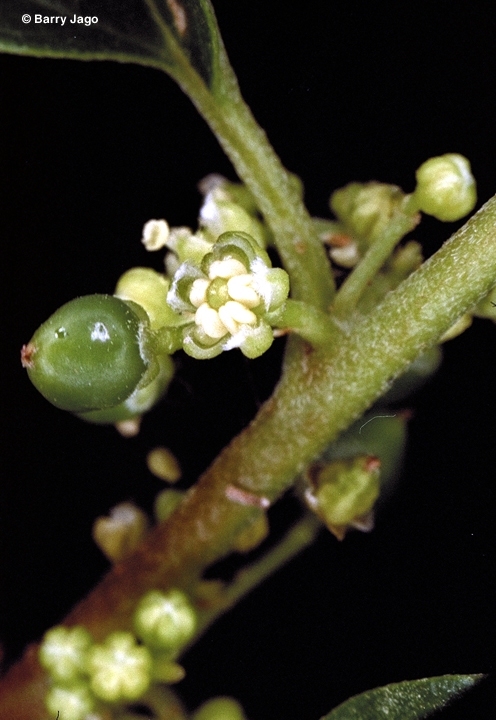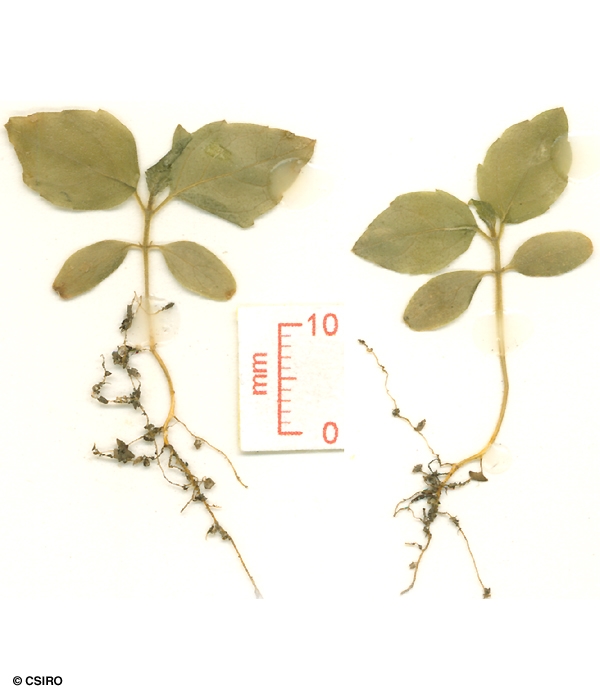Australian Tropical Rainforest Plants - Online edition
Trema cannabina Lour.




Loureiro, J. de (1790) Flora Cochinchinensis 2: 563. Type: Habitat in sylvis Cochinchinae.
Lesser Trema; Poison Peach
A small tree not exceeding 30 cm dbh. Blaze odour obnoxious but difficult to describe.
Cotyledons elliptic, about 7-9 mm long. First pair of leaves ovate, about 12-14 x 8-10 mm. Margin with about 2 or 3 teeth on each side. Both the upper and lower surfaces of the leaf blade scabrous. At the tenth leaf stage: leaves cordate or ovate, apex acuminate, base cordate and both the upper and lower surfaces of the leaf blade clothed in short, scabrous hairs, numerous small, sandpapery glands on the upper surface of the leaf blade, about 3-5 main lateral veins each side of the midrib; petiole, stem and new terminal bud clothed in pale hairs; stipules +/- ovate-triangular, hairy. Seed germination time 18 to 154 days.
This species may have medicinal properties. It may also be poisonous.





